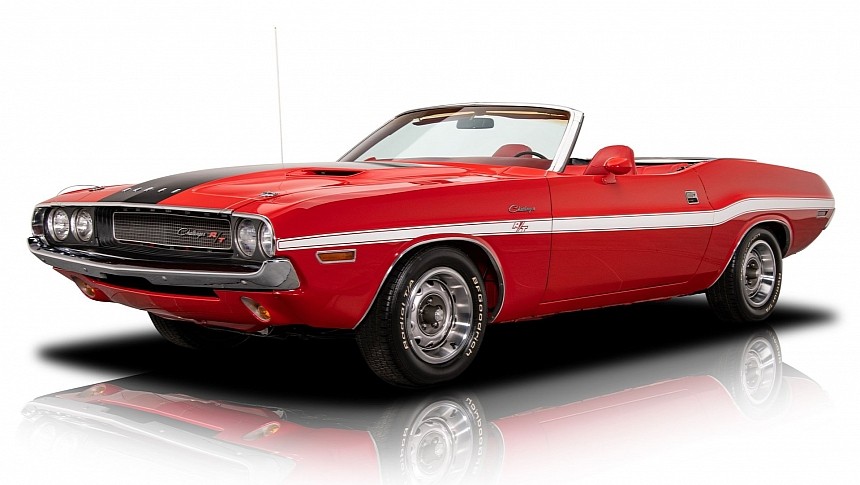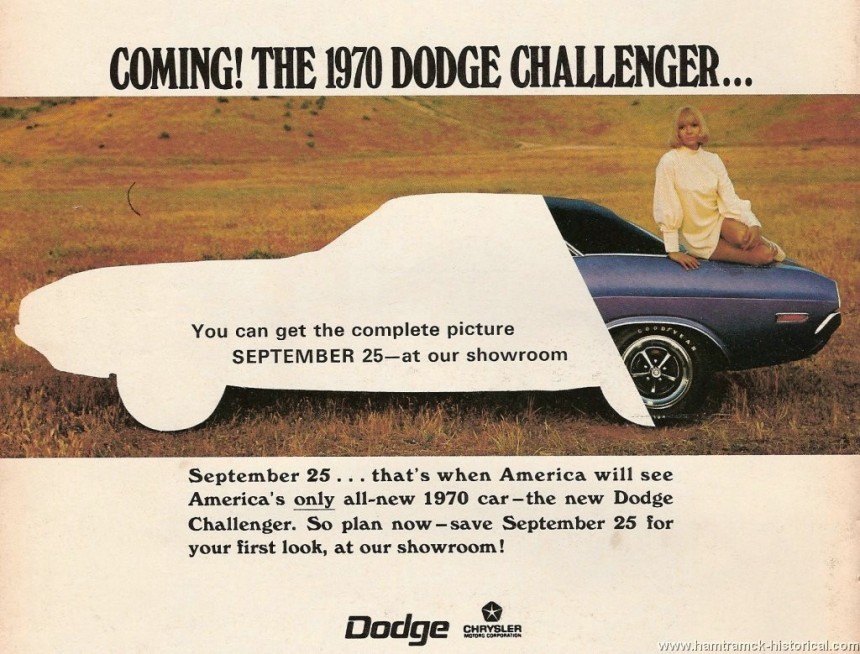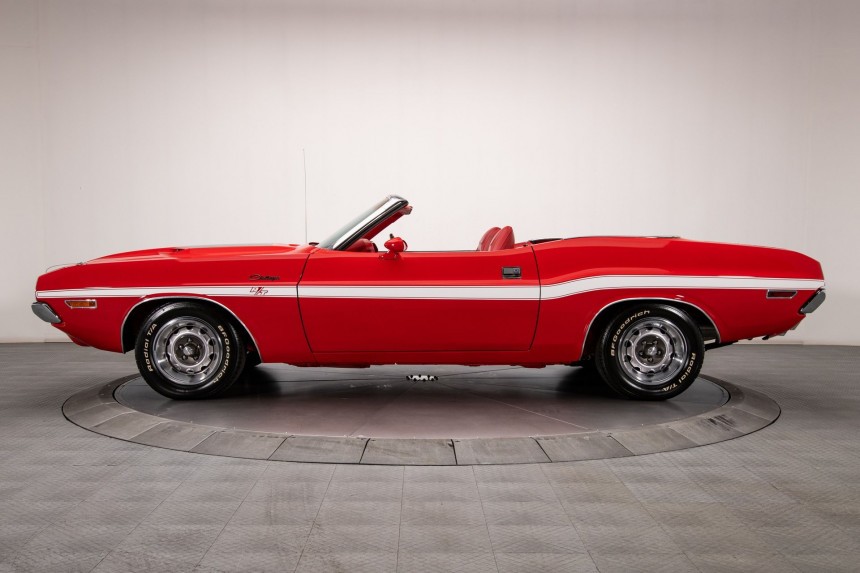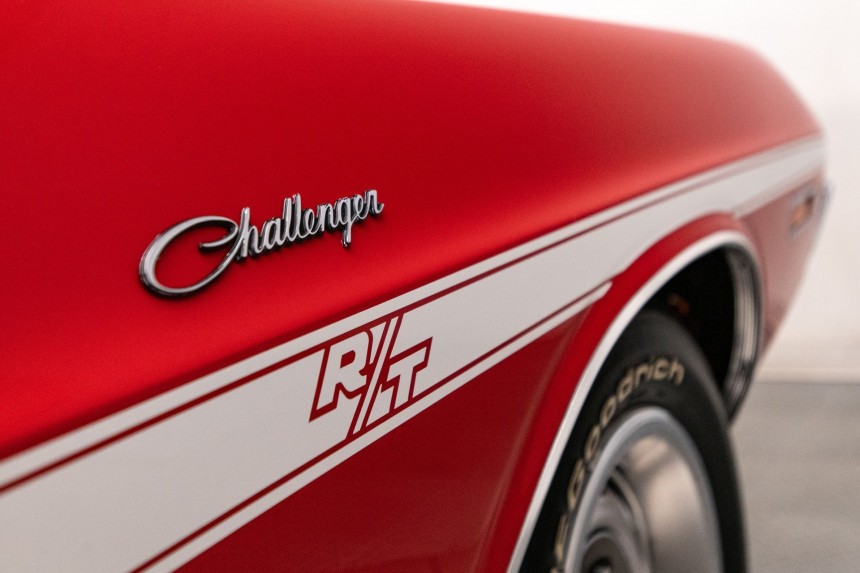It will forever remain a mystery of motoring why Chrysler waited for six years to make a move in the pony car game from the sixties. Ironically, it was Mopar who started the trend with the Barracuda on April Fools’ Day in 1964, two weeks before Ford’s proper horse-branded Mustang, that gave name, rise, and fame to the new car breed. In 1970, however, Chrysler made a double move that would once again check-mate the industry and leave a duo of immortal creations to roam through history. The newly-born Challenger spearheaded that comeback, seconded by the restyled veteran Barracuda.
Chrysler wasn’t a stranger to the muscle car (and horsepower) wars of the late sixties – the Charger, Coronet, Road Runner, GTX, and other Mopars were open-carry big-block-slinging marauders that were more than eager to take on the GTOs, Camaros, Gran Sports, 442, Mustangs, or Cougars of the day.
Strangely, Chrysler had all the big guns to take the fight to the other Two Big from Detroit, but it was completely absent from the big-brawned pony car field. To make matters even more of a proverbial Gordian knot reincarnation, the Barracuda fell on the wrong side of history by debuting a new style but not capitalizing on it.
In 1970, things took a U-turn of massive scale, with Mother Mopar unleashing not one but two weapons upon the United States of Automobile: Dodge’s new challenger to everyone else – cleverly baptized ‘Challenger’ – and the reconstructed Barracuda. The two cars were peas-in-a-pod lookalikes but shared zero sheet metal.
Announced on September 25, 1969 – exactly 54 years ago – the Dodge Challenger was the bigger of the twin cousins, with a two-inch (five centimeters) longer wheelbase than its fishy sibling. But the secret weapon these ruffians kept in hiding was the engine bay. The cavernous volume had been designed to house every single Chrysler engine available for passenger cars, from the measly 198-cubic-inch (3.2-liter) slant six all the way up to the behemoth, the 440-cube (7.2-liter) Raised Block V8.
The Challenger immediately claimed the spotlight, moving in excess of 50% more units than the Barracuda (the Dodge sold almost 77,000 cars over the Plymouth’s just under 49,000). It summoned a storm so powerful it even cannibalized its own family, slashing the Charger’s sales momentum in half (the iconic full-size B-body Mopar recorded a drop of nearly 40,000 cars compared to the 1969 production, from 85,680 to 46,315).
The Challenger’s long-hood-short-deck demeanor was spread across three trim levels and two body styles (hardtop of convertible). The three equipment choices were the base Challenger, the Special Edition (SE), and the Road/Track Scat Pack member. (Note: Dodge also offered to combine the SE and R/T packages in the Challenger).
The base model made the bulk of production in that initial year, with 56,000, and the R/T scored well, too, at 18,512 units. (Second note: there was a third separate variant, the Challenger T/A, a race-homologation production that would allow the Challenger to run in SCCA-sanctioned Trans-American competitions).
Only 3,884 Challengers came in the ragtop version, with 963 branded with the Road/Track performance letters. Being a high-performance model, the R/Ts only brought big-block muscle to choose three distinct plants with four output specs. The entry V8 was the tried and tested 383 CID (6.3-liter) with a single four-venturi carb, and the King (Kong) of the hill was the 426 Street HEMI that only a handful of Challengers received (296, to be exact, with just nine ‘verts).
The runner-up in this impromptu list of a rare body-style-to-engine combo is the 440-6 convertible: 99 1970 Dodge Challenger cars came in this shape. This limited production makes them among the most desired in today’s market, with original survivors popping up about as often as February 29.
The substitute for the unmolested factory-built Challengers with a cloth roof is a restoration car, like the one featured in the video below, that doesn’t have the powertrain installed at the Hamtramck facility on December 12, 1969. The car emerged as a 440 six-barrel High Performance Mopar, with a three-speed heavy-duty TorqueFlite and a dragstrip-ready 4.10 Dana 60 rear.
The seller doesn’t tell much about the car’s history, except that it’s a frame-off restoration performed in 2000. True to the build sheet, the vehicle sports a date-correct big-block with a trio of dual-throats atop the high-rise manifold. The automatic – again, non-matching numbers – sits behind the 390 hp and 490 lb-ft (395 PS, 664 Nm) of Mopar muscle.
The three-speed transmission was fitted on 38 of the 99 Six-Packs from the Challenger’s first brood, and this particular example also received the Bright Red livery, identical to the one applied in the last month of 1969. As a performance model, it didn’t come with air conditioning, but it has power brakes, steering, and a power top.
The selling dealership asks a hunk of a price - $229,900 – for the 46,309-actual-miles first-year Dodge Challenger. That’s 74,511 kilometers – but the mileage of the replacement engine is not disclosed in the ad. Whether the price is right or not is up to the buyer – but a little over a month ago, a four-speed soft-top R/T from the same year, also with a replacement V8, sold for $265,000.
Strangely, Chrysler had all the big guns to take the fight to the other Two Big from Detroit, but it was completely absent from the big-brawned pony car field. To make matters even more of a proverbial Gordian knot reincarnation, the Barracuda fell on the wrong side of history by debuting a new style but not capitalizing on it.
In 1970, things took a U-turn of massive scale, with Mother Mopar unleashing not one but two weapons upon the United States of Automobile: Dodge’s new challenger to everyone else – cleverly baptized ‘Challenger’ – and the reconstructed Barracuda. The two cars were peas-in-a-pod lookalikes but shared zero sheet metal.
The Challenger immediately claimed the spotlight, moving in excess of 50% more units than the Barracuda (the Dodge sold almost 77,000 cars over the Plymouth’s just under 49,000). It summoned a storm so powerful it even cannibalized its own family, slashing the Charger’s sales momentum in half (the iconic full-size B-body Mopar recorded a drop of nearly 40,000 cars compared to the 1969 production, from 85,680 to 46,315).
The Challenger’s long-hood-short-deck demeanor was spread across three trim levels and two body styles (hardtop of convertible). The three equipment choices were the base Challenger, the Special Edition (SE), and the Road/Track Scat Pack member. (Note: Dodge also offered to combine the SE and R/T packages in the Challenger).
Only 3,884 Challengers came in the ragtop version, with 963 branded with the Road/Track performance letters. Being a high-performance model, the R/Ts only brought big-block muscle to choose three distinct plants with four output specs. The entry V8 was the tried and tested 383 CID (6.3-liter) with a single four-venturi carb, and the King (Kong) of the hill was the 426 Street HEMI that only a handful of Challengers received (296, to be exact, with just nine ‘verts).
The runner-up in this impromptu list of a rare body-style-to-engine combo is the 440-6 convertible: 99 1970 Dodge Challenger cars came in this shape. This limited production makes them among the most desired in today’s market, with original survivors popping up about as often as February 29.
The seller doesn’t tell much about the car’s history, except that it’s a frame-off restoration performed in 2000. True to the build sheet, the vehicle sports a date-correct big-block with a trio of dual-throats atop the high-rise manifold. The automatic – again, non-matching numbers – sits behind the 390 hp and 490 lb-ft (395 PS, 664 Nm) of Mopar muscle.
The three-speed transmission was fitted on 38 of the 99 Six-Packs from the Challenger’s first brood, and this particular example also received the Bright Red livery, identical to the one applied in the last month of 1969. As a performance model, it didn’t come with air conditioning, but it has power brakes, steering, and a power top.
The selling dealership asks a hunk of a price - $229,900 – for the 46,309-actual-miles first-year Dodge Challenger. That’s 74,511 kilometers – but the mileage of the replacement engine is not disclosed in the ad. Whether the price is right or not is up to the buyer – but a little over a month ago, a four-speed soft-top R/T from the same year, also with a replacement V8, sold for $265,000.
















































